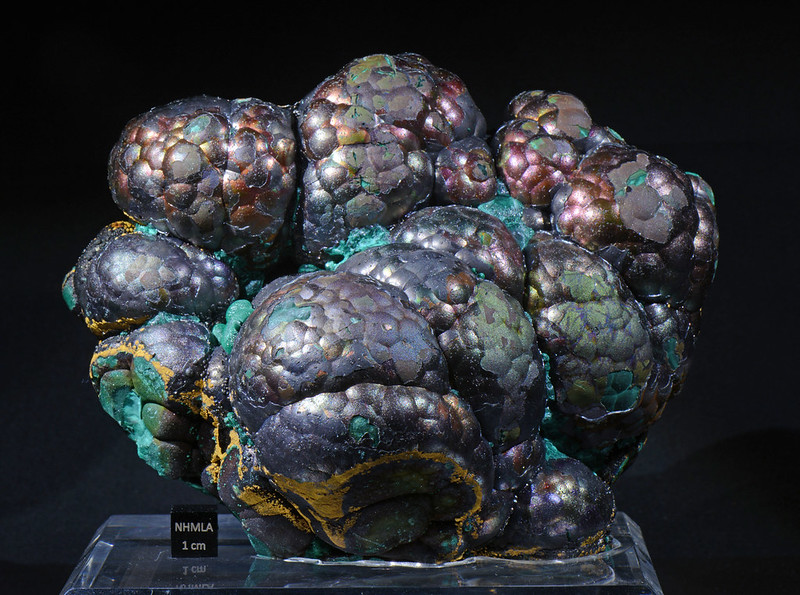
Goethite is a common iron oxide mineral and a significant component of iron ore and soil. It’s named after the German poet and philosopher Johann Wolfgang von Goethe, who had a keen interest in minerals. The mineral is typically brown to black in color but can also appear yellowish or reddish due to impurities. It often forms prismatic or needle-like crystals but can also occur in massive, stalactitic, earthy, and botryoidal forms.

Chemically, goethite is known as iron(III) oxide-hydroxide, represented by the formula FeO(OH). It is often found in the weathering environment as a product of the oxidation of other iron minerals, particularly in environments with high humidity where it forms as rust. Goethite can also precipitate directly from iron-containing waters, typically in marshes and swamps where oxygen is limited.

Goethite has a Mohs hardness of 5 to 5.5, which makes it relatively soft but still significant for its use in pigments and as an iron ore. Historically, it has been used as a raw material for ochre pigments in art and decoration.
Historically, goethite was used as a pigment due to its rich brown color, commonly known as “brown ochre.” Today, it is still used in some artistic and industrial applications. Goethite is also important in the formation of iron ores and plays a significant role in soil and environmental science as an indicator of iron-rich conditions. In the mineral collecting world, goethite specimens are valued for their unique crystal forms and their role in the formation of pseudomorphs, where it replaces other minerals while retaining their external shapes.

Goethite is found worldwide, with significant deposits in Brazil, the United States (notably in Virginia, Georgia, and the Lake Superior region), Australia, and Germany. It commonly occurs in iron-rich soils and sedimentary rocks and is a major component of limonite.
In addition to its practical applications, goethite is of interest to collectors due to its various crystal forms and settings. It’s often associated with other minerals such as hematite, quartz, and clay minerals, forming intriguing and attractive combinations.
Classification: Iron hydroxide mineral
Chemical Composition: FeO(OH) (iron(III) oxide-hydroxide)
Color: Ranges from yellowish-brown to reddish-brown or black
Streak: Yellow-brown
Hardness: 5-5.5 on the Mohs scale
Cleavage: Perfect in one direction
Fracture: Splintery to uneven
Luster: Submetallic to dull
Transparency: Opaque
Crystal System: Orthorhombic
- Online rock and mineral club for collectors of all levels!
- Find community with like-minded rock and mineral enthusiasts.
- Monthly Giveaways!
- Free Access to Entire Digital Library of Products (annual memberships)


